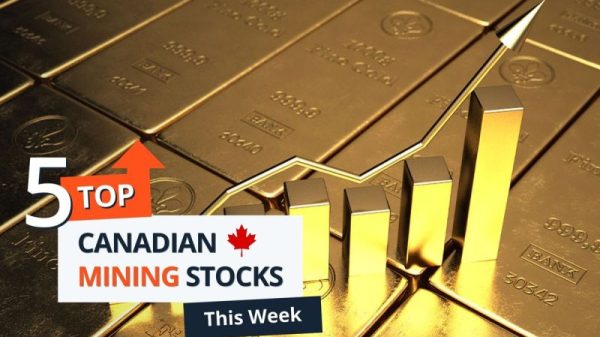Platinum prices have been volatile this year despite high demand and an ongoing supply deficit.
After an erosion of platinum stockpiles in 2023 as industrial demand hit record highs, while demand outstripped mine supply by 851,000 ounces. Halfway through 2024, these trends are still playing out.
Read on to find out more about how platinum performed in the first half of this year.
How did platinum perform in H1 2024?
Platinum prices spent much of the first quarter in decline, falling from US$987.50 per ounce on January 1 to a year-to-date low of US$871.67 on February 9. The start of March saw increasing volatility in the platinum market, with prices moving up slightly during the month as prices for gold and silver improved.
Platinum price chart, January 1 to July 29, 2024.
Chart via Trading Economics.
Platinum started the second quarter at US$901.64 and climbed as high as US$980 before pulling back to US$900 by late April. The price ran even higher in May and reached a year-to-date high of US$1,094.50 on May 17.
While platinum prices pulled back again, the floor hit on June 13 was higher this time, at US$949.34.
After climbing above US$1,000 again in late June, platinum ended Q2 at US$994.40 on June 28. The start of Q3 has seen the platinum price fall further, moving as low as US$932.74 on July 25. It was around US$950 as of July 29.
What factors drove platinum demand in H1 2024?
The World Platinum Investment Council’s (WPIC) first quarter update shows that the market was in deficit by 369,000 ounces during the period, with a full-year shortfall of 476,000 ounces forecast.
According to the report, these dynamics are in part due to strong automotive demand, which reached a seven year high in Q1. Platinum has been increasingly substituted for palladium in autocatalysts due to palladium’s high price.
Despite increased demand for platinum from the automotive sector, its use in the coming years is facing headwinds as consumers continue to move to electric vehicles, which don’t require platinum or palladium. To platinum’s benefit, the WPIC notes that market share of battery electric vehicles is now forecast to grow only from 11 percent in 2023 to 14 percent in 2024 — down from the 15 percent initially predicted.
In a mid-July platinum-group metals webinar hosted by CPM Group, Rohit Savant, CPM’s vice president of research, indicated that despite increased platinum demand, the needle on prices hasn’t budged.
Additionally, Savant explained that massive amounts of inventories have built up over the past decade, which has led to “investor reluctance to add metal aggressively to holdings due to risk of loss of demand from the auto sector.”
He noted that these inventories can provide further headwinds when supply and demand fundamentals are not strong, which has been the situation for the past several years.
According to the WPIC, these inventories accounted for 4.1 million ounces at the end of 2023. With forecast deficits, the group is expecting those inventories to fall to 3.62 million ounces by the end of 2024.
Meanwhile, investment demand is changing. Savant noted that 2023 saw platinum exchange-traded funds (ETFS) in decline. This is supported by WPIC data showing that the last half of the year saw more than 215,000 ounces of ETF outflows. Bar and coin demand was relatively stable during the period, with net inflows of 147,000 ounces.
The first quarter of 2024 saw a reversal of this trend, with platinum ETFs adding 11,000 ounces, and bar and coin investment for the precious metal growing by 64,000 ounces.
Savant acknowledged this reversal with data that extends into the second quarter.
“Investors were solid buyers of the metal,” he said. “These investors have been seen buying when prices fall and pulling back when prices rise. This tells us that these investors do not necessarily see too much downside from here, but are still nervous about chasing (the) platinum price higher.”
What factors impacted platinum supply in H1 2024?
Total platinum supply for Q1 was 1.625 million ounces from all sources, marking the second lowest quarterly supply on WPIC records, behind Q2 2020’s 1.3 million ounces. In its report, the WPIC states that it expects supply risks to remain a theme through 2024; it predicts that total mine supply will decrease by 3 percent on an annual basis.
Mine production increased in the first quarter on an annualized basis, rising to 1.24 million ounces from 1.19 million ounces during the same period in 2023. The rise came from higher output from mines in top-producer South Africa, which produced 816,000 ounces versus 778,000 ounces in Q1 2023.
The WPIC data also suggests that recycled supply during the quarter was stable, with 390,000 ounces entering the market, slightly lower than Q1 2023’s 400,000 ounces. The bulk of recycled platinum was generated by autocatalyst recycling, which produced 275,000 ounces of the metal.
What will happen to the platinum price in 2024?
Despite the platinum market imbalance, overall sentiment remains positive. Even as an overhang in stockpiled inventories provides headwinds, the metal still has strong demand from industrial sources.
With the platinum to palladium ratio above 1, some investors are wondering whether automakers will begin to swap palladium for platinum again. However, Savant doesn’t see this materializing until the ratio gets higher.
“The reality is that autocatalyst manufacturers are unable to and do not make changes to autocatalysts and chemistry on the turn of a dime,” he explained during CPM’s webinar.
“There’s a lot of money and time required to make these changes and align them with emission regulations and auto insurance. So it will take a much higher ratio than what we’re seeing, and a ratio that remains consistently high.”
As automotive demand is expected to remain high, potentially allowing inventories to start depleting, the physical market could begin to tighten and provide support for upward price momentum. However, it may be some time before these inventories draw down sufficiently to provide that support.
Securities Disclosure: I, Dean Belder, hold no direct investment interest in any company mentioned in this article.







































